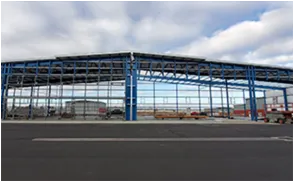- Afrikaans
- Albanian
- Amharic
- Arabic
- Armenian
- Azerbaijani
- Basque
- Belarusian
- Bengali
- Bosnian
- Bulgarian
- Catalan
- Cebuano
- Corsican
- Croatian
- Czech
- Danish
- Dutch
- English
- Esperanto
- Estonian
- Finnish
- French
- Frisian
- Galician
- Georgian
- German
- Greek
- Gujarati
- Haitian Creole
- hausa
- hawaiian
- Hebrew
- Hindi
- Miao
- Hungarian
- Icelandic
- igbo
- Indonesian
- irish
- Italian
- Japanese
- Javanese
- Kannada
- kazakh
- Khmer
- Rwandese
- Korean
- Kurdish
- Kyrgyz
- Lao
- Latin
- Latvian
- Lithuanian
- Luxembourgish
- Macedonian
- Malgashi
- Malay
- Malayalam
- Maltese
- Maori
- Marathi
- Mongolian
- Myanmar
- Nepali
- Norwegian
- Norwegian
- Occitan
- Pashto
- Persian
- Polish
- Portuguese
- Punjabi
- Romanian
- Russian
- Samoan
- Scottish Gaelic
- Serbian
- Sesotho
- Shona
- Sindhi
- Sinhala
- Slovak
- Slovenian
- Somali
- Spanish
- Sundanese
- Swahili
- Swedish
- Tagalog
- Tajik
- Tamil
- Tatar
- Telugu
- Thai
- Turkish
- Turkmen
- Ukrainian
- Urdu
- Uighur
- Uzbek
- Vietnamese
- Welsh
- Bantu
- Yiddish
- Yoruba
- Zulu
Nov . 09, 2024 16:22 Back to list
Weld Plates for Metal Buildings A Comprehensive Guide
In the realm of construction, particularly in the domain of metal buildings, the importance of weld plates cannot be overstated. Weld plates are essential components that enhance the structural integrity and stability of metal structures. Understanding their function, applications, and installation procedures is crucial for manufacturers, builders, and engineers involved in metal construction projects.
What are Weld Plates?
Weld plates, sometimes referred to as welding plates or base plates, are flat pieces of metal that serve as connections between different structural elements. They are typically made of steel and are designed to be welded onto either beams or columns, providing a robust connection point for various components of a metal building. Depending on the design and engineering requirements, weld plates can vary in size, thickness, and shape.
The Role of Weld Plates in Metal Buildings
Weld plates play several vital roles in the construction of metal buildings
1. Connection Points They provide a solid and reliable connection point for beams, columns, and other structural elements. This is especially important in metal buildings, where the load-bearing capabilities of the structure must be maximally utilized.
2. Load Distribution By distributing loads over a larger area, weld plates reduce stress concentrations on individual components. This dispersal of weight contributes to the overall stability and longevity of the structure.
3. Flexibility in Design Weld plates allow for greater flexibility in design and construction. They can be custom-fabricated to meet specific structural requirements, accommodating various architectural styles and functionalities.
4. Facilitating Future Modifications Metal buildings are often subject to modifications and expansions. Weld plates can be strategically placed to provide points for future connections, making it easier to enhance or alter the structure as needed.
Types of Weld Plates
Various types of weld plates are utilized in metal buildings, each suited for specific applications. The most common types include
weld plates for metal building

- Base Plates These are situated at the bottom of vertical elements like columns, providing stability and support
.- Splice Plates Used to connect two structural members, splice plates allow for seamless transitions between different sections of a structure.
- Anchor Plates These are used to secure elements to the ground or to concrete foundations, ensuring that the building remains anchored and stable.
- Connection Plates Serving as points of attachment for lateral bracing and connections, these plates enhance the overall rigidity of the framework.
Installation of Weld Plates
The installation of weld plates is a critical phase in the construction of metal buildings. It requires careful planning and execution to ensure structural integrity. Key steps involved in this process include
1. Design Considerations Prior to installation, it is crucial to consult structural engineers to ensure that the dimensions and specifications of the weld plates meet the load requirements of the building.
2. Preparation The surfaces of both the weld plate and the areas to which it will be welded must be cleaned thoroughly to eliminate any contaminants that could affect the quality of the weld.
3. Welding Techniques Different welding techniques might be employed based on the thickness of the weld plate and the structural elements. Common methods include MIG, TIG, and stick welding.
4. Inspection After welding, it is essential to inspect the connections for any defects or weaknesses. Non-destructive testing may be employed to ensure the integrity of the welds.
Conclusion
Weld plates are integral components in the construction of metal buildings, contributing significantly to their strength, stability, and adaptability. Understanding their functionality, types, and installation procedures is essential for anyone involved in the design and construction of metal structures. As the demand for metal buildings continues to grow, so too will the need for reliable and efficient weld plates, ensuring that modern construction meets the challenges of today and the future. Whether you are a seasoned engineer or a budding architect, recognizing the pivotal role of weld plates will undoubtedly enhance your projects and contribute to the creation of safe, enduring structures.
-
How Do Prefabricated Steel Structures Transform Modern Construction?
NewsJul.14,2025
-
How Do Prefabricated Metal Buildings Redefine Modern Construction?
NewsJul.14,2025
-
How Do Prefab Insulated Metal Buildings and Steel Structures Revolutionize Modern Construction?
NewsJul.14,2025
-
How Do Pre - Engineered Steel Structures Redefine Modern Construction?
NewsJul.14,2025
-
Advancing Modular Construction with Prefabricated Metal Structures
NewsJul.14,2025
-
Advancing Industrial Infrastructure with Prefabricated Steel Solutions
NewsJul.14,2025
Products categories
Our Latest News
We have a professional design team and an excellent production and construction team.












